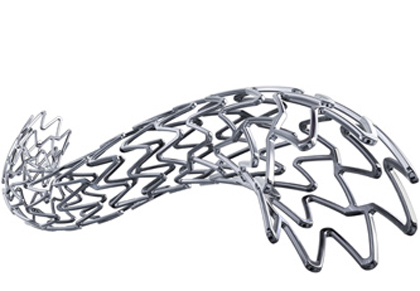Courtesy of SBHCI Diabetic patients have worse evolution after coronary PCI. Drug eluting stents with bioresorbable polymers were designed to facilitate arterial healing, and reduce inflammation and late and very late thrombosis risk. This sub-study of diabetic EVOLVE II patients presents the 3 year outcomes of the SYNERGY stent. The EVOLVE II included…
DEFINE FLAIR and IFR SWEDEHEART: Safety in Revascularization Based on FFR and iFR in Both Stable and ACS Patients
The safety of physiology-based coronary revascularisation has been supported by evidence for years now. DEFER (1998-2001) was one of the first related studies. However, major changes in device and medical treatment safety and efficacy have taken place since then. This could affect clinical results, particularly as regards acute coronary syndromes (ACS). Several studies have cast…
DESSOLVE III: Xience vs. MiStent
The MiStent device is made of cobalt-chromium, with struts of up to 64 µm thick. It is coated with a completely absorbable polymer that contains a microcrystalline form of sirolimus that embeds directly into the vessel wall. The drug is eluted continuously for up to 9 months. This was a multicenter noninferiority study that randomized patients…
Successful CTO: associated to higher survival rate?
Courtesy of Dr. Carlos Fava. The presence of chronic total occlusions (CTO) in coronary angiograms varies between 5% and 30%, depending of the different analyzis. Likewise, they have been associated to higher mortality rate and the need for myocardial revascularization surgery. The frequency of CTO PCI is low across the different series (3.8%), though…
In-stent CTO: different prognosis from that of De Novo CTO?
Courtesy of Dr. Carlos Fava. Chronic Total Occlusions (CTO) are truly challenging and different technologies are being developed to treat them, but currently our most pressing questions about them are whether in-stent CTO present the same success rate as de novo CTO, and what their prognosis is. The present trial analyzed 899 CTO: 111(12.3%)…
Incidence of ‘Slow Flow’ After Rotational Atherectomy of Calcified Arteries
Courtesy of Dr. José Álvarez ‘Slow flow’ may complicate a rotational atherectomy procedure, especially when done on severely and extensively calcified lesions and small caliber vessels. Although its incidence is between 3% and 27%, its cause remains unclear, and it is thought that platelet antiaggregation induced by burr rotation speed may be behind it. …
Follow-up at 10 years for invasive vs. conservative strategy for non-ST-segment elevation infarction
The ICTUS (Invasive Versus Conservative Treatment in Unstable Coronary Syndromes) trial compared early invasive strategy with a selective invasive strategy in patients with non-ST-segment elevation acute coronary syndrome (NSTE-ACS), with elevated markers such as cardiac troponin T. The absence of long-term benefit of an early invasive strategy at 1 and 5 years had already been reported.…
Dual antiaggregation time and death by bleeding
Despite the fact that some randomized studies and meta-analyzis have suggested prolonged dual antiaggregation could be associated to increased death rate, the underlying mechanism remains unclear. It is only logical to assume that if there was an actual increase in mortality associated to prolonged antiaggregation, this should be due to bleeding; however, no studies have…
Primary angioplasty and multivessel lesions: how should we proceed?
Courtesy of Dr Carlos Fava. The association of primary angioplasty with multivessel lesions is not infrequent and has been analyzed in various studies and meta-analyses. However, the proper course of action remains unclear. According to this study, fractional flow reserve (FFR) could better define the ischemic impact of lesions and help with the identification of…
Is Impella an option in high-risk angioplasty?
Courtesy of Dr. Carlos Fava. Provitional ventricular assist devices are increasingly used in high-risk angioplasties, particularly those involving unprotected left main coronary artery (LMCA) with defective ventricular functioning. However, so far its true role has not been well-studied. This study analyzed 127 consecutive patients in the USpella registry from 2008 to 2015. These subjects underwent high-risk…
Promising outcomes for DEB in long femoropopliteal artery lesions
Courtesy of Dr. Carlos Fava. For type A and B femoropopliteal artery lesions, percutaneous transluminal angioplasty (PTA) with balloon has proven beneficial; however, drug-eluting balloons (DEB) have shown superiority as regards restenosis. Some studies have reported favorable outcomes for DEB in type C and D lesions, but its real benefit is still unclear. This study prospectively…










